Deer Cartridges – A Trio at the Top Leave a reply
by Wayne Vanzwoll
Name three fine deer cartridges? Easy! Name only three? Oh. That’s really, really hard!
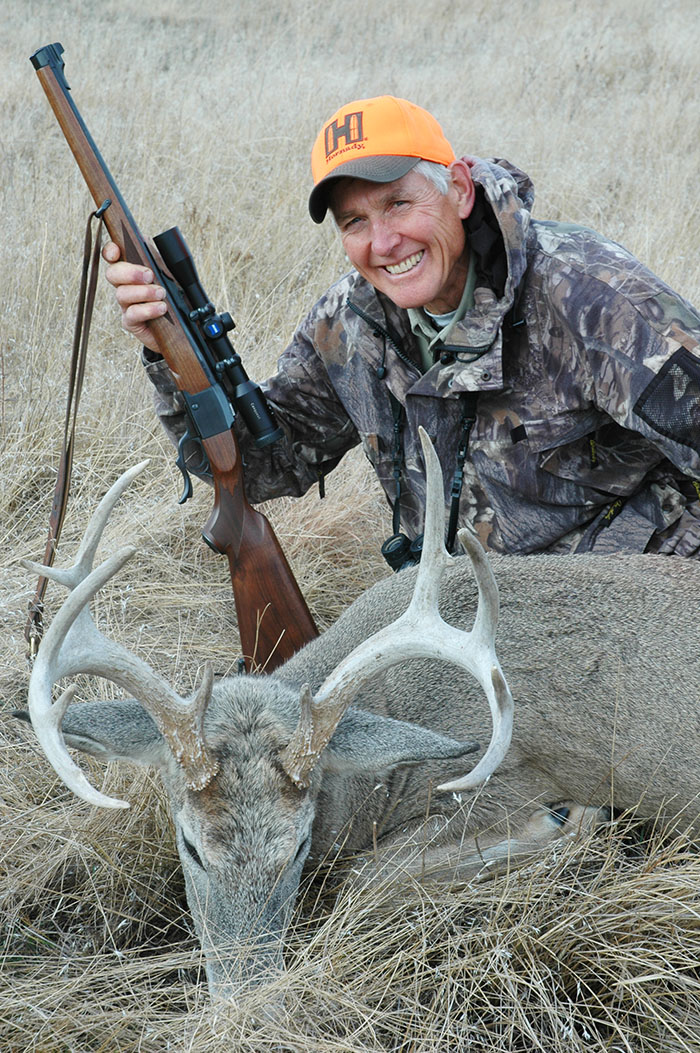
Wayne shot his first deer with a SMLE in .303 British. He still hunts with the round, here in a Ruger. (Wayne Vanzwoll photo)
The deer was loping through Michigan poplars when a bullet from my $30 SMLE broke its neck. My first whitetail. The .303 British, now 130 years old, still works fine for deer. It has surely killed more Canadian moose than any other cartridge. It has downed elephants.
A pointed .303 British bullet outruns flat-points from the .30-30 and .32 Special popular in lever-action rifles for most of the 20th century. So do modern softpoints from the 6.5×55 and 7×57, also infantry rounds pre-dating the Great War. Fine deer cartridges, all.
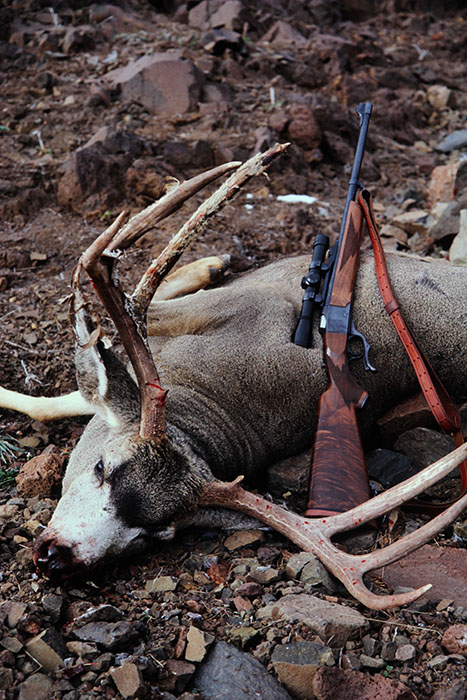
Dating to 1892, the 7×57 with modern pointed bullets is a fine deer round. It gave Wayne this muley. (Wayne Vanzwoll photo)
But at its debut in 1925 the .270 Winchester started hunters on a different track. Since then, bolt-action deer rifles have chambered ever-friskier rounds, with flatter arcs and more punch.
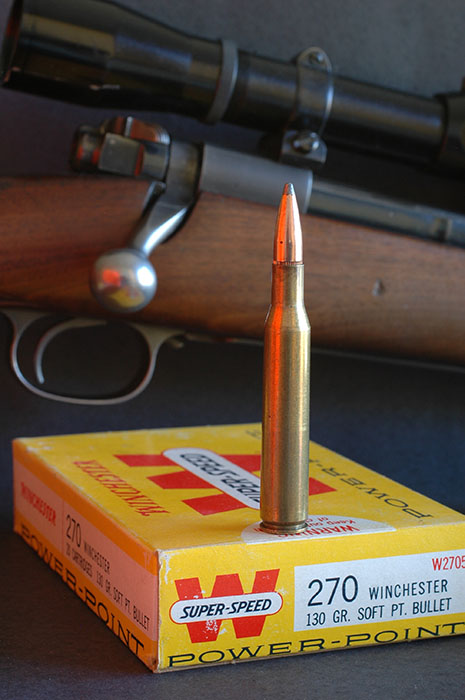
The .270, introduced by Winchester in 1925, set hunters on a faster-is-better kick. Scopes contributed. (Wayne Vanzwoll)
Now the deer-cartridge bin bulges with options. The 7mm and 30-caliber magnums, while useful for bigger game, strike me as excessive. Like sending Junior to college in a $50,000 pickup. You needn’t have my blessing to hunt with a hotrod cartridge or spring for a new F-250. But I’ll stick with milder deer loads – say, those firing 100- to 140-grain bullets at 2,650 to 3,150 fps from bolt rifles with 6mm to 7mm bores. Specifically: the .243 and 6mm, the .257 Roberts and .25-06, the 6.5 Creedmoor, 6.5×55 and .260 Remington, the .270, 7mm-08 and 7×57. Add the .300 Savage and .308 with 150-grain missiles to make it an even dozen. How can I include the .270 and not the .280? You’re right; they’re too similar. A baker’s dozen, now, these are easy to shoot, and with proper bullets deadly even on quartering shots to 300 yards.
But what about the .30-06, long America’s darling and arguably its most versatile round? Well, arbitrary lines must fall somewhere. The ’06 is a notch up in power and recoil from the .308, which itself has more punch than plaid-clad riflemen a century ago could have imagined using on deer.
Top trio? Perhaps the three 6.5s, ballistically very close. The .260 and the 6.5 Creedmoor work in short actions, the Swede not so much. The Creedmoor trumps the .260 for efficiency and paired with long bullets. But these are academic differences.
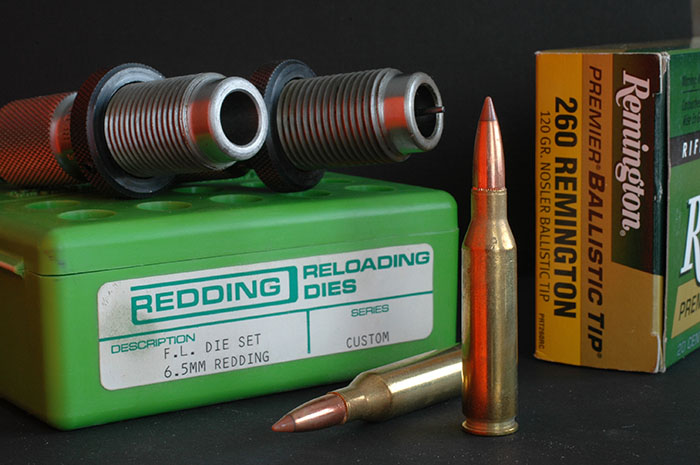
The .260 Remington, a necked-down .308, shoots flat, recoils gently, kills deer past 300 yards. Bravo! (Wayne Vanzwoll photo)
If you like lever rifles, sifting cartridges became harder after Hornady introduced LeverEvolution ammo. It sends spitzer bullets fast from hulls long shackled by flatpoints, almost doubling effective reach. Last fall I shot a buck at 80 yards with a .25-35 rifle predating women’s suffrage. The 110-grain Hornady carried 1,200 ft-lbs at impact – three times the energy of a .25-20 at the muzzle. You’ll recall it was a .25-20 that in 1914 killed the Jordan buck, a gigantic whitetail that topped Boone & Crockett lists until 1993.
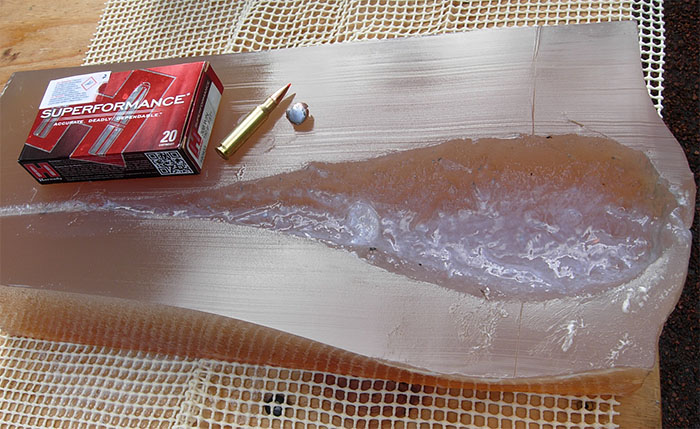
The .308 with 150-grain bullets makes Wayne’s list. It creates wound cavities once hard to imagine! (Wayne Vanzwoll photo)
Favorite deer cartridges are like favorite songs, or favorite dogs. Your top picks depend largely on what you expect of them. I prefer to hunt close, increasingly with iron sights. Given a 100-yard limit imposed by cover or irons, a .25-35 makes sense. It’s about as light a cartridge as I’ll use. A humane kill matters to me, and not every buck is a ribcage awaiting a bullet from the side. I had to fire again to kill the deer I hit (obliquely) with the .25-35.
My favorite deer loads? Whatever’s in the chamber when my rifle comes to cheek, and the brass bead or the crosswire finds a forward rib.
Wayne Van Zwoll
Journalist, Gun Writer
The Outdoor Line
710 ESPN Seattle


